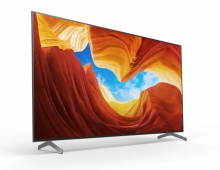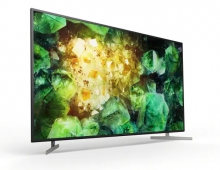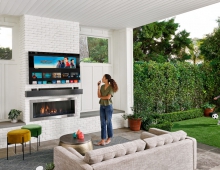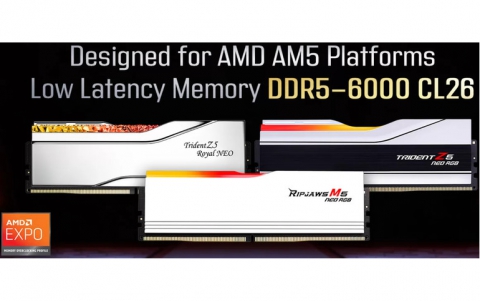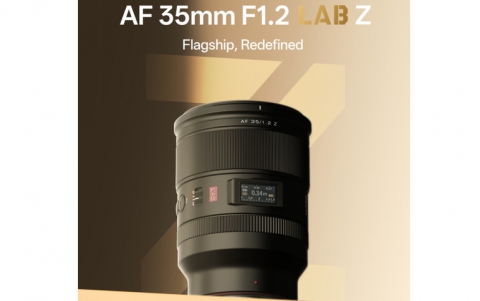
Can UHD's Introduction Match the Hype?
A few years ago, 3-D TV came onto the market with tremendous hype and promise to transform how people watch TV. It didn't happen. How avoiding the mistakes of 3-D may spell greater fortunes for brands making Ultra High Definition TVs?
Faced with a lack of content, high pricing and inconvenient technology, 3-D never emerged from a niche status?a situation that continues today. Many now predict the same fate for ultra-high-definition (UHD) television.
But having learned from past mistakes, TV suppliers are gearing up to make UHD TV a success, determined not to repeat the mistakes they made with 3-D. According to IHS, the current outlook shows suppliers shipping some 20.8 million UHD TV panels by 2017.
When 3-D debuted, brands touted the technology as big of a shift like moving to color from black-and-white. It also provided hope for brands to differentiate their products, to gain a competitive advantage and to increase profitability.
However, the reality of 3-D TV did not meet such high expectations. The poor adoption rate of 3-D was a wakeup call for major TV brands, forcing them to shift strategy away from focusing on selling 3-D TV sets to selling 3-D TV capability as an added feature.
Brands also learned they could not charge a price premium for 3-D. This changed the adoption rate, and by the end of 2012, only about 20 percent of all liquid crystal display televisions (LCD TVs) sold had 3-D capability, according to the LCD TV panel estimations from information and analytics provider IHS Inc.
Learning from these mistakes, TV brands are prepping for a high rate of growth for UHD TVs during the next four years. The rise will begin this year as UHD TV panel shipments increase to close to 943,000 units, up from under 33,000 units in 2012. The next two years will see shipments rise to 7.1 million units in 2015, on their way to reaching 20.8 million units by 2017, with 50-inch and larger sets capturing 34 percent of the LCD TV panel market.
The market for 3-D TVs faced three major obstacles when it launched: content, price and technology. Even with 3-D popular in cinema with movies such as "Avatar," there was simply not enough 3-D content for televisions. 3-D TV also doubled the price premium of regular sets, and in perhaps the most significant obstacle of all, required consumers to change their viewing behavior by wearing a pair of glasses. For all these reasons, 3-D adoption stalled.
Many believe that UHD will suffer a similar fate because like 3-D, the format lacks television content, and introductory prices are very high. Still, there are some major differences.
First, UHD TV does not require any change in consumer behavior, as there is no need to wear glasses. UHD TV also provides greater depth to picture quality, giving a more immersive experience. And with upscaling technology, consumers can see better picture quality even when watching FHD content.
Learning from past experience, many TV brands are actively working to provide UHD content, either through upscaling or through the creation of proprietary UHD content. Already, Japan has plans to begin UHD broadcasting as soon as 2014, two years earlier than originally planned. Also, 4K cameras and camcorders are now on the market, enabling creation of 4K content. Movies in 4K are likewise starting to show up.
The increased focus on UHD LCD TVs comes in part from delays in commercialization for organic light-emitting diode (OLED) TVs, an advanced technology that has encountered various challenges in manufacturing. With UHD now taking over for the meantime, panel suppliers and brands are working aggressively to reduce prices, with lower-cost UHD TV sets expected later this year, mostly in sizes from 50-inch to 100-inch.
Availability of low-end UHD LCD TV panels from suppliers, especially from Taiwan, may also help trigger UHD market growth, particularly in China. Some brands are already planning to introduce a 50-inch UHD TV in China at a $2,000 price point. Along with lower prices, UHD TV quality also has to be accepted by consumers For long term sustainable growth to occur, however, the quality of UHD TV must be deemed acceptable by consumers to justify the switch, and prices have to come down as well.
Top panel suppliers such as Samsung, LG Display, AUO and Innolux are all introducing UHD TV panels, with brand manufacturers such as Sony, Sharp, Samsung, LG Electronics, Vizio and many Chinese bands planning to launch their own offerings later this year. The variety of products available, as well as the different price points and sizes for the sets, will help increase adoption rates, IHS believes.
On the technological front, oxide thin-film transistor (TFT) is considered to be a superior technology compared to conventional amorphous TFT LCD in order to achieve higher-resolution products. But oxide TFT faces challenges in capacity and yield issues, whereas panel suppliers have been able to offer lower-cost UHD panels produced from conventional amorphous TFT LCD.
But having learned from past mistakes, TV suppliers are gearing up to make UHD TV a success, determined not to repeat the mistakes they made with 3-D. According to IHS, the current outlook shows suppliers shipping some 20.8 million UHD TV panels by 2017.
When 3-D debuted, brands touted the technology as big of a shift like moving to color from black-and-white. It also provided hope for brands to differentiate their products, to gain a competitive advantage and to increase profitability.
However, the reality of 3-D TV did not meet such high expectations. The poor adoption rate of 3-D was a wakeup call for major TV brands, forcing them to shift strategy away from focusing on selling 3-D TV sets to selling 3-D TV capability as an added feature.
Brands also learned they could not charge a price premium for 3-D. This changed the adoption rate, and by the end of 2012, only about 20 percent of all liquid crystal display televisions (LCD TVs) sold had 3-D capability, according to the LCD TV panel estimations from information and analytics provider IHS Inc.
Learning from these mistakes, TV brands are prepping for a high rate of growth for UHD TVs during the next four years. The rise will begin this year as UHD TV panel shipments increase to close to 943,000 units, up from under 33,000 units in 2012. The next two years will see shipments rise to 7.1 million units in 2015, on their way to reaching 20.8 million units by 2017, with 50-inch and larger sets capturing 34 percent of the LCD TV panel market.
The market for 3-D TVs faced three major obstacles when it launched: content, price and technology. Even with 3-D popular in cinema with movies such as "Avatar," there was simply not enough 3-D content for televisions. 3-D TV also doubled the price premium of regular sets, and in perhaps the most significant obstacle of all, required consumers to change their viewing behavior by wearing a pair of glasses. For all these reasons, 3-D adoption stalled.
Many believe that UHD will suffer a similar fate because like 3-D, the format lacks television content, and introductory prices are very high. Still, there are some major differences.
First, UHD TV does not require any change in consumer behavior, as there is no need to wear glasses. UHD TV also provides greater depth to picture quality, giving a more immersive experience. And with upscaling technology, consumers can see better picture quality even when watching FHD content.
Learning from past experience, many TV brands are actively working to provide UHD content, either through upscaling or through the creation of proprietary UHD content. Already, Japan has plans to begin UHD broadcasting as soon as 2014, two years earlier than originally planned. Also, 4K cameras and camcorders are now on the market, enabling creation of 4K content. Movies in 4K are likewise starting to show up.
The increased focus on UHD LCD TVs comes in part from delays in commercialization for organic light-emitting diode (OLED) TVs, an advanced technology that has encountered various challenges in manufacturing. With UHD now taking over for the meantime, panel suppliers and brands are working aggressively to reduce prices, with lower-cost UHD TV sets expected later this year, mostly in sizes from 50-inch to 100-inch.
Availability of low-end UHD LCD TV panels from suppliers, especially from Taiwan, may also help trigger UHD market growth, particularly in China. Some brands are already planning to introduce a 50-inch UHD TV in China at a $2,000 price point. Along with lower prices, UHD TV quality also has to be accepted by consumers For long term sustainable growth to occur, however, the quality of UHD TV must be deemed acceptable by consumers to justify the switch, and prices have to come down as well.
Top panel suppliers such as Samsung, LG Display, AUO and Innolux are all introducing UHD TV panels, with brand manufacturers such as Sony, Sharp, Samsung, LG Electronics, Vizio and many Chinese bands planning to launch their own offerings later this year. The variety of products available, as well as the different price points and sizes for the sets, will help increase adoption rates, IHS believes.
On the technological front, oxide thin-film transistor (TFT) is considered to be a superior technology compared to conventional amorphous TFT LCD in order to achieve higher-resolution products. But oxide TFT faces challenges in capacity and yield issues, whereas panel suppliers have been able to offer lower-cost UHD panels produced from conventional amorphous TFT LCD.


